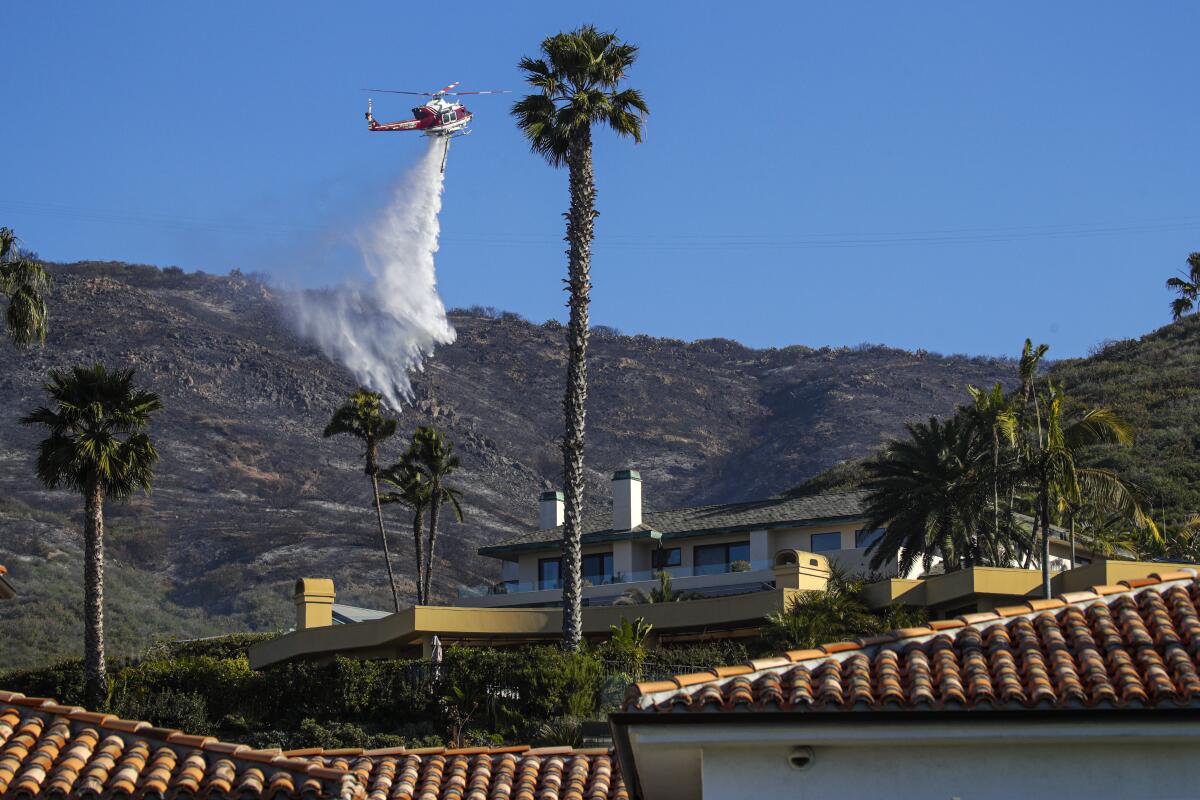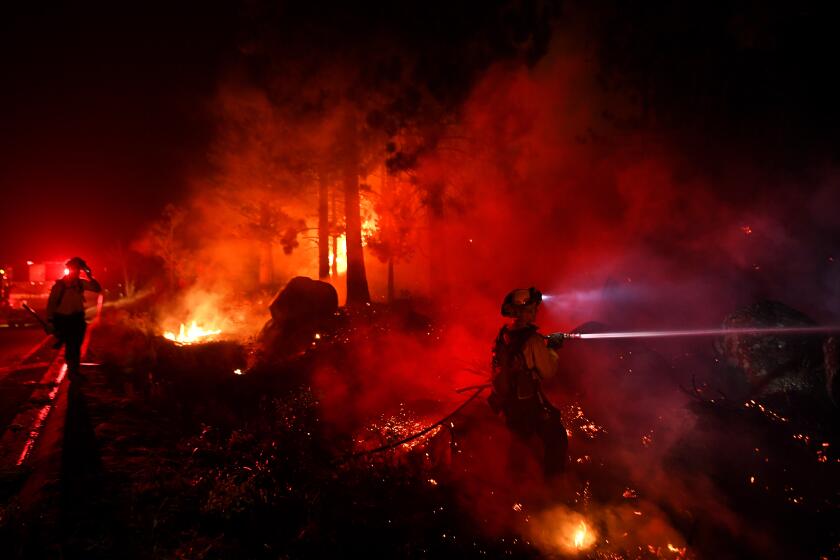Proposed regulations would compel insurers to account for wildfire mitigation efforts

- Share via
Insurance providers in California will have to incorporate proactive wildfire mitigation efforts into their rates for homeowners and businesses under proposed new regulations, state officials announced Friday.
The regulations, which could be in effect as soon as this summer, are intended to drive down skyrocketing insurance costs for residents in wildfire-prone areas and improve the safety of communities in their paths.
The plan is largely a response to consumers’ complaints that insurance companies have been unwilling to give ratepayers credit for steps taken to lower the risks of loss and damage, such as installing fire-resistant roofs or clearing combustible vegetation from properties, Insurance Commissioner Ricardo Lara said.
“With more Californians rolling up their sleeves and reaching into their own pockets to protect their homes and businesses, insurance pricing must reflect their efforts,” he said in a statement.
The proposed rules will incorporate the new “Safer from Wildfires” framework unveiled by the state’s Department of Insurance last week, which outlines a list of expert-recommended actions homeowners and governments can take to better protect themselves from fires.
State fire, insurance and emergency response officials release guidelines for keeping your home safer from wildfires.
Under the current rules, insurers can assign properties “wildfire risk scores” based on their level of risk, such as vegetation, slope or firefighter access. Generally speaking, higher wildfire risk corresponds to a higher insurance premium.
But those scores often fail to account for measures property owners and communities are taking to reduce those risks, officials said. Currently, only 17 insurance companies representing 40% of the insurance marketplace offer discounts for such efforts.
What’s more, insurers can sometimes assign wildfire risk scores based on incorrect or outdated data. For example, if an insurance company mistakenly assumes that a home has a wood shingle roof — which is known to pose an extreme risk in the event of a wildfire — the company could charge a much higher premium.
The proposed regulations will allow property owners to review their risk scores and other factors used to calculate their premiums and appeal them if desired.
“Holding insurance companies accountable for accurately rating wildfire risk in the premiums they charge Californians will help save lives and reduce losses,” Lara said.
The regulations will lead to a more competitive market and ensure that rates and premiums aren’t excessive or unfair, he said.
A United Nations report on the growth of extreme wildfires worldwide suggests California can do more to increase fire resiliency.
They will also incentivize property owners to make the mitigation efforts, which are becoming increasingly necessary and urgent as the state’s wildfires grow hotter, larger and more intense.
The fire season is also growing longer each year due to drought, heat and other impacts of climate change — and wildfires are expected to get even worse in the years to come.
Experts have noted that population growth, demand for housing, urban development and land-use practices are pushing more people and homes into the wildland-urban interface. Mitigation efforts will improve safety for not only individual homes and businesses, but also their surrounding communities.
“By rewarding homeowners and businesses for the wildfire safety actions they take, these regulations will be a huge assist to our efforts to prevent the severe loss of life and property from wildfires like we saw in the devastating Thomas fire and debris flow that followed,” Montecito Fire Chief Kevin Taylor said in a statement about the proposed regulations.
The Thomas fire seared through 280,000 acres and burned more than 1,000 structures in Santa Barbara and Ventura counties in 2017 and 2018. More than 20 people were killed by debris flows following the blaze.
Lara said he was prompted to take action in part after hearing from consumers during a virtual hearing in October 2020. Many people in the meeting said they were frustrated by opaque policies and a lack of consideration for their efforts.
“The use of a fire score for rating and underwriting is problematic,” Richard Dinon, a 20-year resident of the San Bernardino Mountains, said during the meeting. “There’s no transparency for the insured customer to make an assessment of the validity of the formula, the currency of the data or the consistency of the application to their properties.”
El Dorado County resident Chris Swarbrick, who is also a member of the county’s Fire Protection District, said his rates had increased by 430% in two years, and that many residents in the community had been unable to get insurers to visit their properties to assess home hardening efforts. Some were seeing policy quotes of as much as $20,000 a year.
“The stories of the the exorbitant amounts are very, very real,” he said.
The public can weigh in on the proposed new regulations in writing or at a hearing in Oakland on April 13 that will be streamed online.
More to Read
Sign up for Essential California
The most important California stories and recommendations in your inbox every morning.
You may occasionally receive promotional content from the Los Angeles Times.












